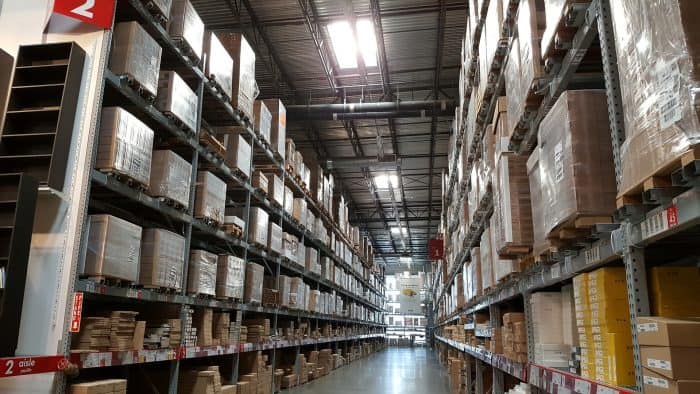Here are the top 4 Ways to Maximise Your Warehouse Space in 2018. As businesses grow, the demand for more space and a larger warehouse can be imminent, but, not every business has the capacity to move premises. Moving your business for additional warehouse space can be costly and causes a considerable amount of disruption in the daily functions and level of output. If a relocation or expansion isn’t suitable for the company at the time, it is worthwhile considering how you can develop and adapt the existing floor plan to enhance your storage options and maximise space within the warehouse which, ultimately, will streamline activities and improve output.
Assess
One of the first steps in maximising warehouse space is assessing your current inventory, layout and general function of the space. This includes calculating the size of the floor plan and subtracting space that is used by fixed obstacles such as walls, doors or shelving. The assessment should also evaluate the stock levels and whether the stock is in the most effective position for access. For example, if there are items which are seasonal, these should be placed in an area of the warehouse that is less frequently used. On the other hand, stock with the highest turnover should be placed in the most optimum position as replenishment and access is required more often. Once the space has been assessed, the function of the floor and the arrangement of both the storage and stock can be reordered to meet the business’s needs and optimise the storage space.
Structured Shelving
The unfixed shelving within your warehouse should be placed close together, and in a form that allows workers access to the stock with ease. Moving shelves closer together will not only tidy the space within the warehouse, but it will also create more room. It is important to be aware of the size of any machinery that may need to access the space, leaving enough room for stock replenishment and mobility of the machinery. A structured and organised shelving solution creates uniformity within the warehouse, while also providing employees with a clear path and understanding of where the products are stored, this allows for a much faster retrieval of items, as well as an easier inventory check.
Organisation
In a warehouse, organisation is a crucial element which can drastically affect the performance. For clarity, all products and shelves should be clearly labelled, including the name of the item, description and a barcode. Items should be arranged on the shelf in weight order, with the heaviest of your products stored on the lower shelves and the lighter of the stock kept higher. The products that have a high turnover should be kept together, in an area of the warehouse that is easily accessed, if the product is usually brought with another item you are storing, place them on shelves next to each other. A Warehouse management system will assist with ensuring the workplace is organised to a high standard, as well as providing real-time stock information.
Equipment
Some of the biggest consumers of time for warehouse workers are not finding the item where they expected, and it should have been, another is when equipment needed to pack the item and ready it for shipment is not easily accessible. To avoid time being wasted, it is vital that the apparatus needed for delivery is to hand, for example, the shrink wrapping machinery should have additional rolls of wrap close by, which can be easily and quickly changed if the roll runs out. Boxes, bubble wrap and tape should all have a specific and designated location within the warehouse so that employees know exactly where to look when they need to use something.
Do you have any tips for maximising a warehouse? We would love to hear about them via our social media channels, let us know!



